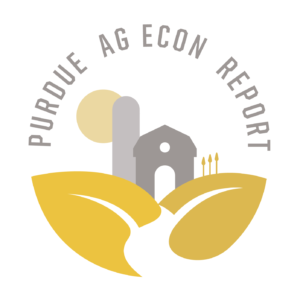Hog Producers Facing Losses
December 13, 2015
PAER-2015-16
Chris Hurt, Professor of Agricultural Economics
After low production in 2014 due to baby pig death losses from the PED virus, pork supplies rebounded upward by 7% in 2014. Producers have expanded the breeding herd by 1% in the past year, and thus pork production is expected to rise again in 2016 by an additional 2%.
Demand has been weak in late 2015 and 2016 as well. The strength of the U.S. dollar is encouraging increased imports of pork and live hogs from Canada, and exports have weakened as well. Greater imports and lower exports both contribute to greater supplies of pork for U.S. consumers. Secondly, the announcement by the World Health Organization in which they linked bacon and processed meat consumption to human cancer in late October seemed to negatively affect pork demand.
Live hog prices averaged about $52 per hundredweight for the first three quarters of 2015, but dropped substantially in the final quarter to about $44. Prices are expected to remain in the low-to-mid $40s in the winter and then move upward to the low $50s for the second and third quarters of 2016. Prices in the final quarter of 2016 are expected to be in the mid-to-upper $40s.
On the positive side, costs of production for 2016 are expected to be the lowest in six years dating back to 2010. Total cost of production is estimated at around $50 to $51 per live hundredweight. This is in sharp contrast to 2012 when costs were estimated at $67 per hundredweight. Lower feed prices are the driver of lower costs. Annual U.S. corn prices dropped from $6.67 per bushel in 2012 to $3.69 in 2015. Soybean meal has dropped from an average of $440 per ton in 2012 to an estimated $310 per ton for 2016.
Returns turned negative in November of 2015 as hog prices fell to six-year lows. Losses in the last quarter of 2015 were estimated at $18 per head. The industry is expected to experience losses of about $20 per head this winter. Very small profits are anticipated for the second and third quarters of 2016, before returning to losses once more in the last quarter. For the entire year of 2016, modest losses of $6 to $8 per head are expected.
The industry needs to avoid any further expansion in 2016. Hog production is already large enough to have driven hog prices below costs. Total meat supplies will continue to move up 3% in 2016 with chicken production up 2% and beef production surging by 5%. This means pork will face a lot of competition in the meat case and the current anticipation is that the strong dollar will continue to be a negative for all meat prices.
